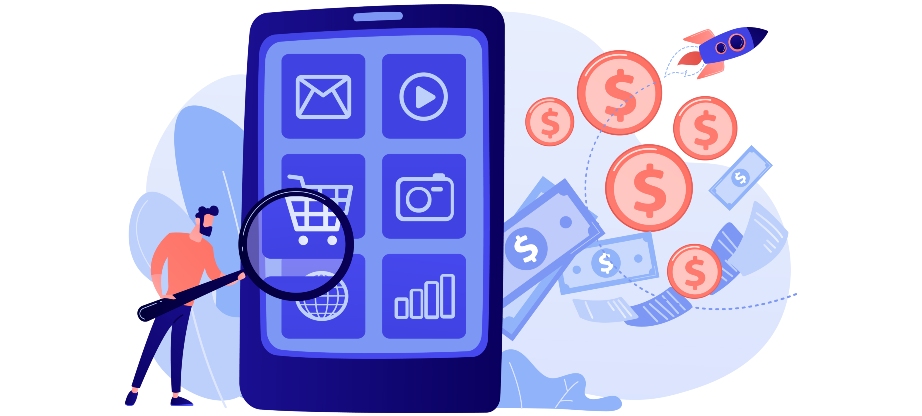The Do’s And Don’ts Of Ecommerce Marketing
E-commerce platforms have been gaining traction over the past decade. This means that countless brands are now competing for the attention of millions of online users. Thus, there’s a greater need for e-commerce stores to promote their respective businesses to stay ahead of the competition. Now, this is where e-commerce marketing comes in.
What Is E-Commerce Marketing?
E-commerce marketing is a marketing strategy focused on promoting products and services online. This includes content marketing, search engine optimization (SEO), running ad campaigns, and working with influencers. The goal of e-commerce marketing is to drive traffic to a store to increase sales and brand awareness.
The challenge for many online businesses is that they need to learn how to utilize various channels properly to drive traffic to their websites and increase sales. This can affect the bottom line of an e-commerce company because they may not be able or willing to spend money on advertising if there is no immediate return on investment (ROI).
Online businesses must understand that e-commerce marketing isn’t limited to paid ads, and that different channels must work together to increase sales and boost awareness of their brand. This article includes useful information about everything you can follow and avoid when promoting your e-commerce brand online:
The Dos Of E-Commerce Marketing
The following are seven of the most effective e-commerce marketing strategies you can follow:
Utilize Video Marketing
Videos are crucial in e-commerce marketing because they allow you to showcase products in action and give potential customers a better idea of how they work than just printed words alone ever could.
Some effective video marketing strategies to promote your e-commerce store include creating short, shareable videos that showcase your brand’s personality through the products you sell.
You may also produce a weekly livestream where you or an endorser talks directly into the camera while wearing or using one of your products. This can help you gain a loyal following and build brand awareness.
Invest In High-Quality Images
When it comes to e-commerce, images are everything. You can produce high-quality visuals for your platforms by hiring professional photographers. They have the expertise you need to create stunning images that entice buyers into your store.
If you don’t have the budget to hire a professional photographer, consider investing in stock photography. This will allow you to save money while still having access to high-quality images that can be used across all platforms and marketing efforts. However, this method won’t work for your product photos. Instead, if you lack the budget for a professional product photographer, use a photo editing service that can significantly boost the quality of your images. Go to this page for more information on product photo editing.
Understand Your Target Market
You also need to understand your target audience to know what they want and don’t want. This will help you create content that is relevant to them and will keep them coming back for more. Knowing your target audience well will make it easier for you to create content that appeals to them specifically.
When studying your target audience, you can conduct market research with marketing and design specialists from a digital marketing agency to understand the preferences of your ideal online buyers. For instance, you may ask potential customers in a survey if they want to purchase a specific product or service.
The more information you have on your target market, the better the chance of finding out what they want and how best to serve them.
Add Call-To-Action Buttons
The most important thing you can do for your e-commerce business is to get your visitors to take action. The call-to-action button is one of the most effective ways to convert sales.
These buttons are displayed on every page or product in your store; usually a ‘Buy Now’ button or a ‘Subscribe’ button. You can also use a ‘Leave a Review’ button to encourage your existing customers to share their testimonials.
Whatever it is, ensure that it’s prominently displayed on each page of your website and that it’s easy to find for visitors browsing the site.
Prioritize Your Niche
It’s important to establish what kind of products you want to sell before designing an online store. For example, if you’re not selling food items, don’t design an e-commerce store with a food-inspired theme.
Determining your niche will help you create targeted content and offerings relevant to users in this market. To find out what kinds of products users in your chosen niche are interested in buying, you need to determine their sub niches and classify them into separate categories. Then you can start promoting specific products within these categories by ensuring each one gets enough exposure online. This will enable you to determine which sub niches work or don’t work and which ones to promote further or discontinue.
Regularly Produce Informative Content
You need to give your followers a reason to stay engaged with your brand. This means that you have to supply them with fresh content regularly. However, it shouldn’t just be random topics. Instead, you have to invest in informative and shareable ones to keep your audience interested.
When producing informative content, you must ensure it’s relevant to your target audience. You can do so by creating content topics related to their interests. This will help you generate more traffic to your website, eventually leading to more sales for your business because people will want to buy whatever they find interesting.
Ensure Your Website Is Mobile Responsive
Most people today love browsing the Internet on their mobile phones and tablets. Thus, your website should be mobile responsive to look good on any device. Having a responsive website helps you attract a wider audience.
Creating a mobile-friendly website, however, is not limited to the responsiveness of the design; the fonts, colors, buttons, website speed, load time, and other elements can also contribute to the overall appeal of your website or online store.
The Don’ts Of E-Commerce Marketing
After learning some of the e-commerce marketing tactics you can follow, you must also know the seven mistakes to avoid. Read on:
Don’t Get Caught Up In The Hype
It’s easy to get completely sucked into the hype of e-commerce marketing, but it’s essential not to be swayed by the trends. You shouldn’t be blinded by the promise of a quick buck or obsessed with your rankings. Instead, focus on what matters most — offering your target market something useful while growing your brand.
For instance, you can create helpful and original content like practical tips without neglecting your sales funnel.
Avoid Plagiarizing Content
You might be tempted to copy and paste content from other sites to get your e-commerce website off the ground in no time. But it’s a bad idea. If you want people to trust your brand, you must ensure that your content is unique, original, and authentic. Copying off other businesses can hurt your brand image.
You can hire freelancers or create content yourself. Make sure that whatever you put out there can stand out from the crowd of e-commerce websites on the Internet today.
Don’t Underestimate The Power Of Social Media Marketing
Social media is a great way to build trust, engage customers, and generate leads. It also provides a platform for e-commerce businesses to connect with their customers, which is one of the reasons why it can be so powerful for your business.
Online entrepreneurs that don’t invest in social media marketing miss out on an opportunity to engage with their target audience and generate leads for their e-commerce business.
You have to leverage social media apps like Facebook, Instagram, and Twitter to boost awareness of your e-commerce store. However, you must establish sound social media marketing strategies to help you stand out from all the other brands on these platforms. For instance, you can use Facebook ads effectively by creating engaging content on your page.
You can also hold contests or events that give users the opportunity to win prizes or discounts on a particular product or service offered by your e-commerce store. Doing so will encourage more people to visit your store and become loyal customers who will continue making purchases for the long term.
Avoid Spamming Customers Via Email
Email marketing is an essential part of any e-commerce business. It allows you to reach potential customers and promote your products or services more personally. Unfortunately, sending too many promotional emails to your list may damage your reputation as an e-commerce business owner.
You should avoid this mistake to maintain a positive brand image. For instance, if online users click on the link and see a lot of sales pitches or coupon codes, they will assume that you’re only trying to sell them something and may unsubscribe from future emails from you. If you do have a legitimate offer or promotion that you want to send out, consider writing exciting and valuable content and seamlessly incorporate your pitch.
Don’t Be Lazy With Long-Tail Keywords
The long tail is one of the most crucial elements of any e-commerce business. Keywords are like the vehicle that drives users to your store. Don’t underestimate the power of long-tail keywords because they can help you generate more traffic and boost sales. However, they also require a lot of effort to optimize.
To start using long-tail keywords when promoting your e-commerce store, you need to conduct keyword research first. For instance, if you offer food delivery services, you might want to have ‘food delivery’ in your keywords for SEO purposes. This will help drive people looking for this service to your site through search engines, increasing your online brand’s visibility.
Don’t Use Misleading Tactics To Trick Consumers
Refrain from tricking people into buying by using misleading tactics like surprise endings and false guarantees. These tricks are designed to make online consumers think they’re getting something in exchange for a purchase. This can affect the credibility of your brand, which causes you to miss out on sales opportunities.
Instead of pulling off these misleading tactics, you can always opt for a disclosure statement that clearly outlines the terms and conditions of your offer. The customer will then be able to make an informed decision about whether or not they want to buy your product or service.
In addition, you should ensure that all your images are clear and that there are no typos in your copy to avoid scaring away potential customers who might want to purchase from you but aren’t sure if they should do so.
Don’t Be Afraid To Ask For Testimonials
If you want more testimonials for your e-commerce store, you need to be willing to ask for them. This helps you boost the image of your company, which can increase lead conversion rates.
You can ask for testimonials from your clients by using surveys or polls on social media platforms to find out what customers think about your business. Then, you can publish these messages on your website to show prospects that your products or services are reliable. This will encourage them to try your offers, boosting your revenue.
Key Takeaway
As an e-commerce store owner, your ultimate goal is to make money. And the best way to do just that is through e-commerce marketing. However, with so many tools out there that you can use, it might seem like there isn’t a downside to using every one of them.
Ultimately, e-commerce marketing is a one-part qualitative assessment involving a lot of trial and error. For example, running specific email blasts or performing site work at different times of the day/week can increase your ROI. On the other hand, working with the wrong influencer might ruin your brand’s reputation.
Nevertheless, you must realize that — like everything else — e-commerce marketing has pros and cons, but the benefits will far outweigh the efforts if you do things right.


